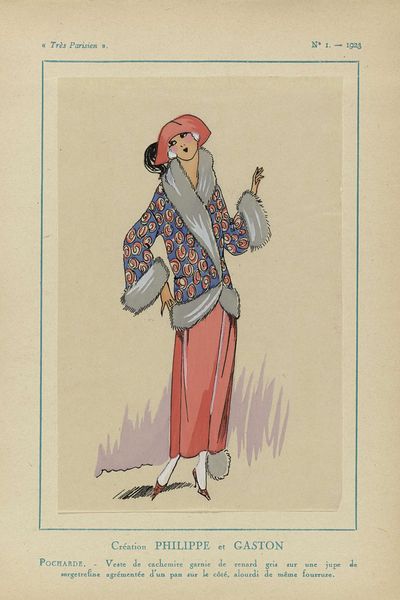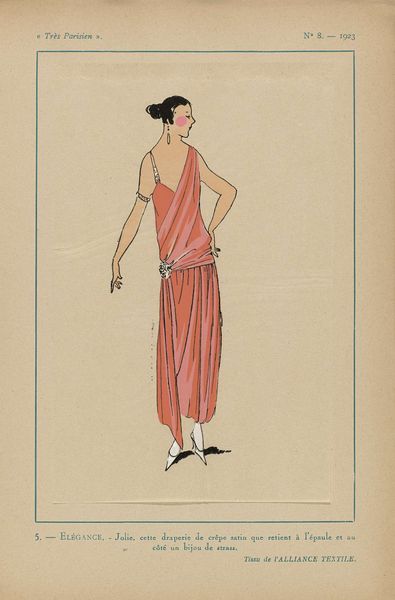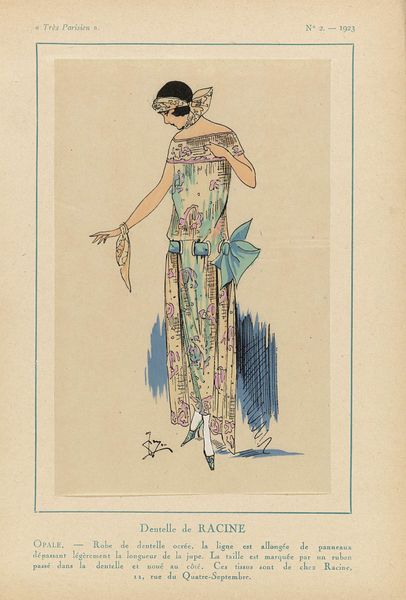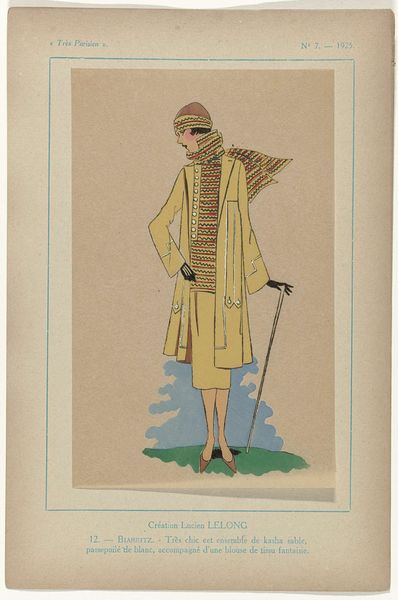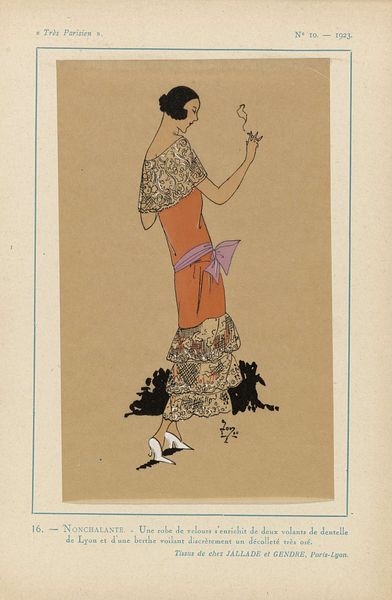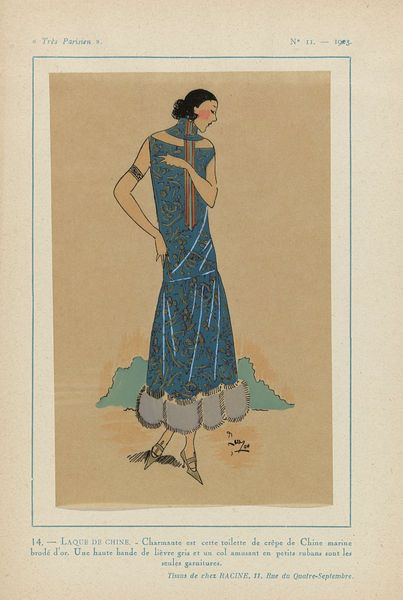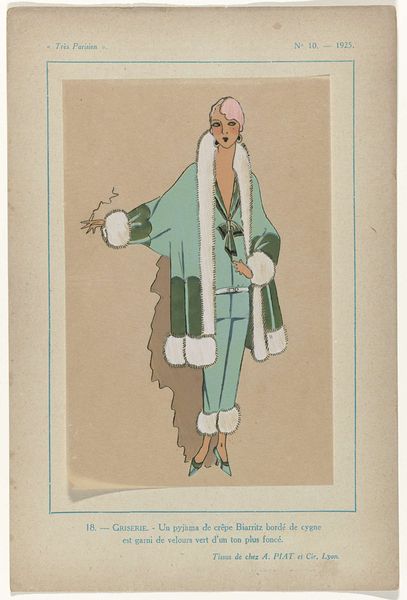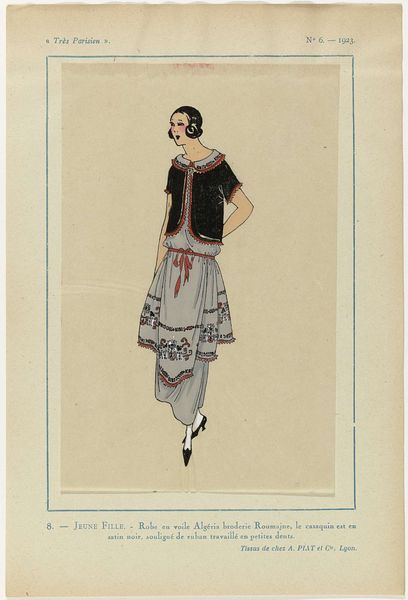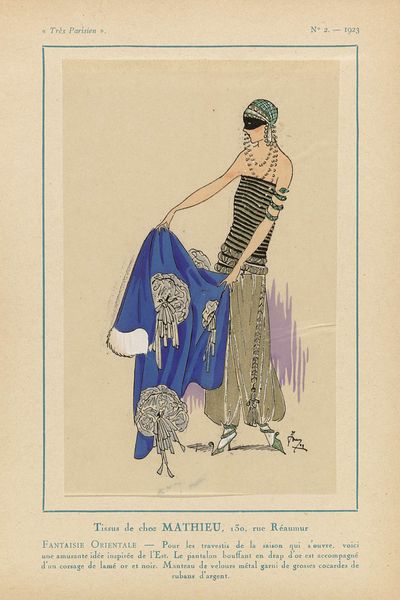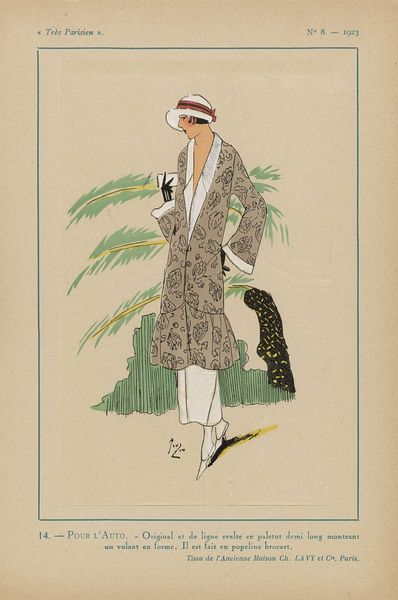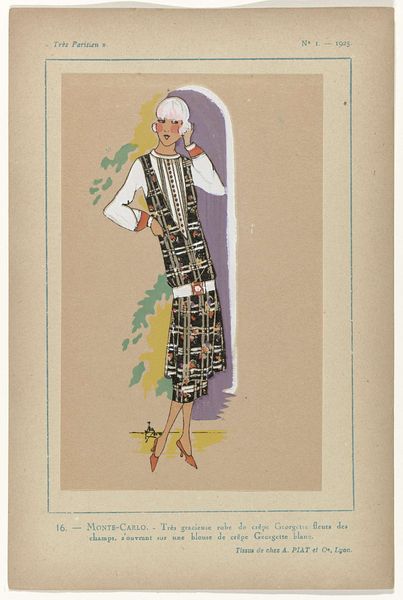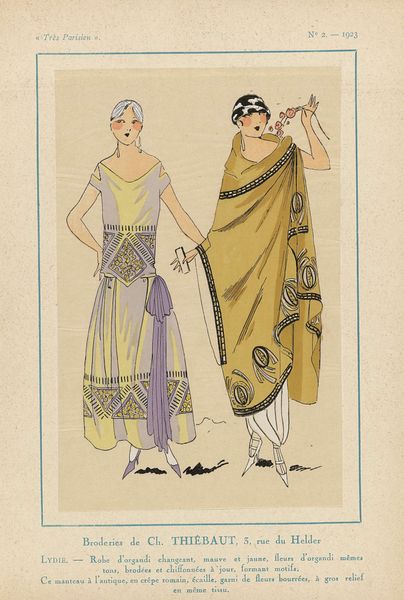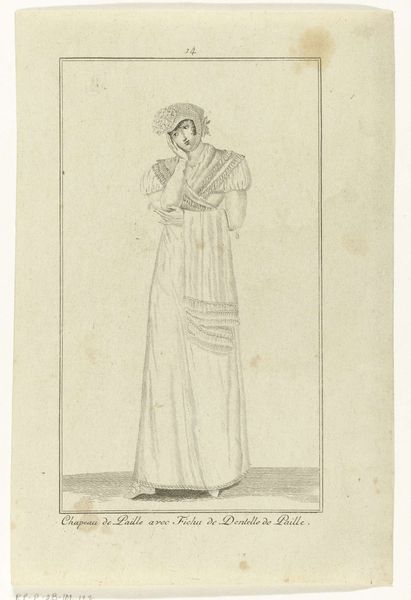
Très Parisien, 1923, No 7: 4.- LIBELLULE. - Très élégante robe de taffetas... 1923
0:00
0:00
Dimensions: height 269 mm, width 180 mm
Copyright: Rijks Museum: Open Domain
Curator: And here we have an image titled “Très Parisien, 1923, No 7: 4.- LIBELLULE. - Très élégante robe de taffetas...” made anonymously around 1923. It’s currently held in the collection of the Rijksmuseum, created using ink in print and drawing mediums. Editor: It has this flapper-era stylishness about it. Chic, yet somehow frail. Is it just me, or is there something quietly melancholic about the subject’s pose? Curator: It’s interesting you say that. Fashion plates like this weren’t just about showcasing the latest designs; they also idealized a certain type of lifestyle and aspiration. Consider the production itself—this likely involved several skilled laborers creating designs, engraving plates, printing, and coloring. Each step is a story of labor and material transformation. Editor: Ah, the material realities shaping dreams, you mean. It's about making those dreams available in a way. So taffeta – lightweight yet crisp, and these wonderful striped bands and ribbon details. The very language suggests movement, airiness – LIBELLULE translates as "Dragonfly". I think that matches well with that somewhat dreamy affect of Art Nouveau styling. Curator: Indeed. It’s about creating a desire, fostering a culture of consumption. The print provides detailed description - "*Très élégante robe de taffetas blanc garnie au col d'un ruban hayadère à longs pans*", or “very elegant white taffeta dress adorned with a long, striped ribbon.” The purpose being the details help potential customers know enough to inquire with a seamstress. Editor: Yes, I see the social machine buzzing within the ink lines! But it remains a lovely thing, I have to admit. Curator: Absolutely. And these drawings show us not only how garments were envisioned but offer insight into how gender roles and societal expectations of the 1920s were visually and materially constructed. Editor: Yes, the dress, the pose… it all says something about both the freedom and constraints of that era. It's a nice moment frozen in time and technique. Curator: Precisely. Thank you for highlighting the beauty and labor of the period in what it suggests about the social conditions of early twentieth century Paris.
Comments
No comments
Be the first to comment and join the conversation on the ultimate creative platform.
